Learning from Arc-et-Senans (2): Function of Ornament
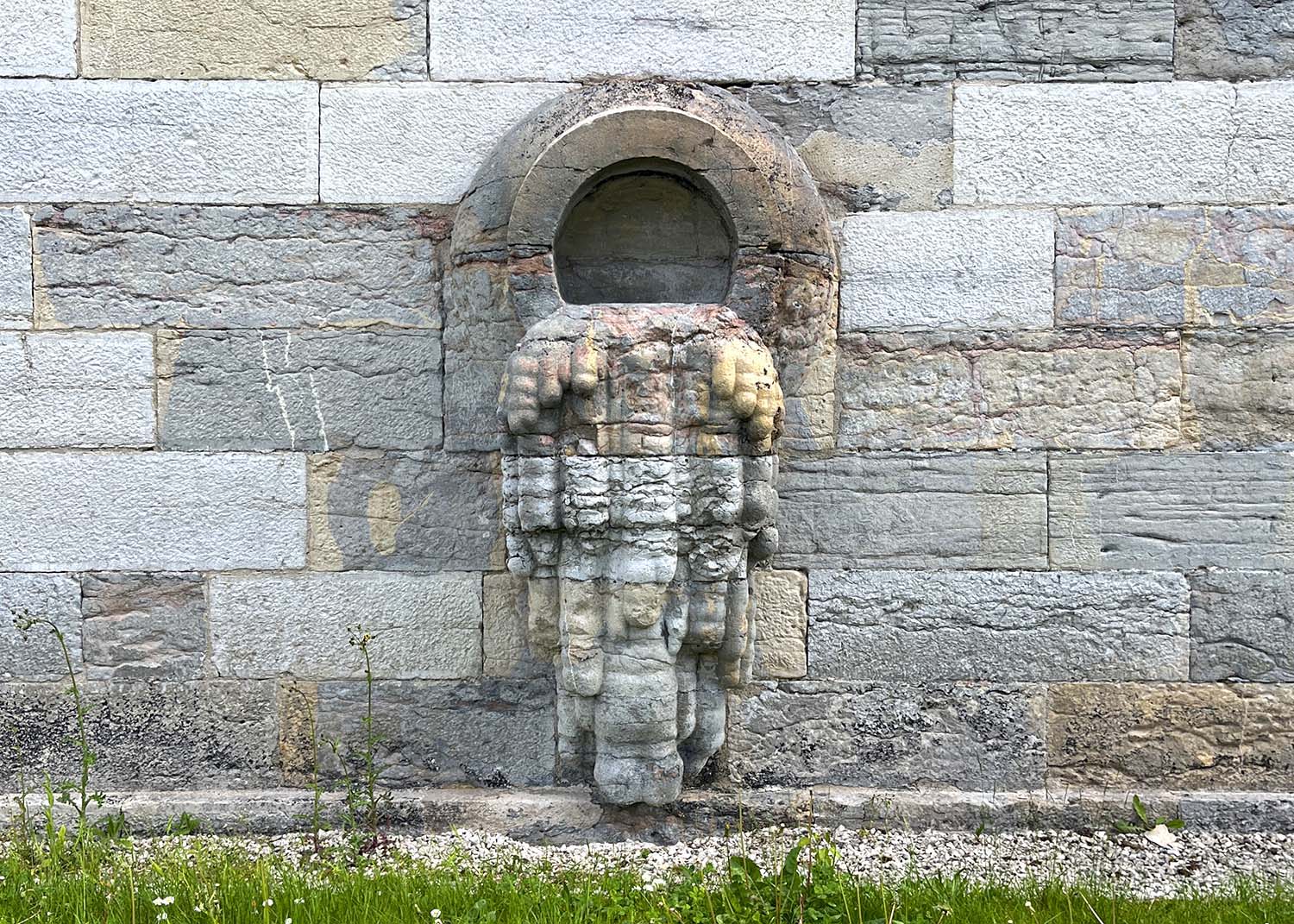
An important element characterising the Royal Saltworks of Arc-et-Senans is the ornaments. All the facades except the house of the director and two lodges of tax collectors have ornaments of ‘urn with flowing liquid’ at equal intervals. There are 44 urns with flowing liquid in total: six on the facade of the main gate, two in the grotto at the entrance, eight each on the facades of two salt production buildings, and four each on the facades of five buildings along the semicircular path of the courtyard.
These ornaments are made of limestone of various colours, as same material as the facades of the buildings. The urns are carved in the ways that they are protruding from the facades at the angle of 82 degrees. The liquid that flows from the spout is carved like a solidified liquid, as if it were about to turn from brine into salt. They are all roughly the same size and format, but they are all different. Particularly some ornaments on the two salt production buildings have expressions like erosion by salt water, indicating that here are the places to handle salt directly.
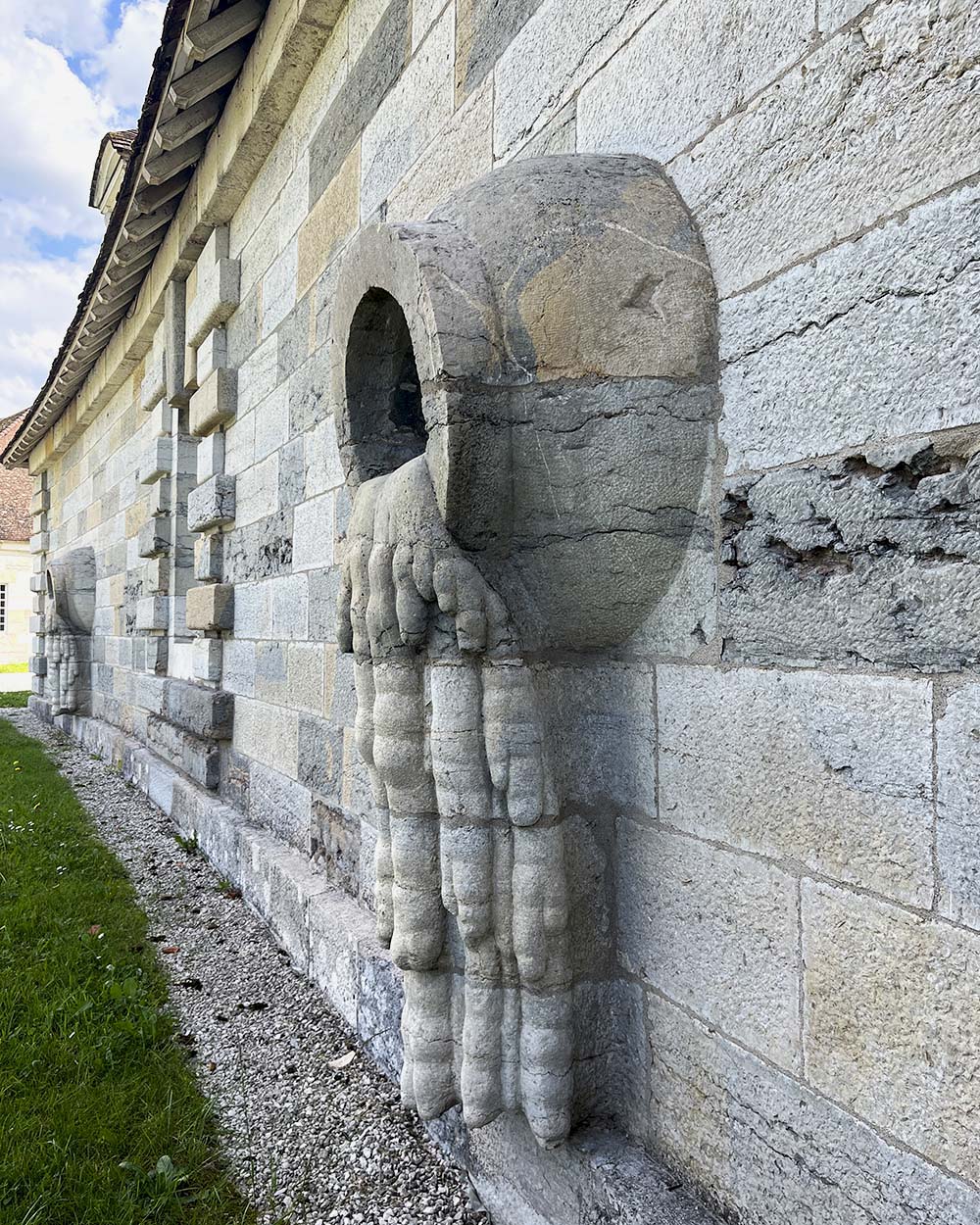
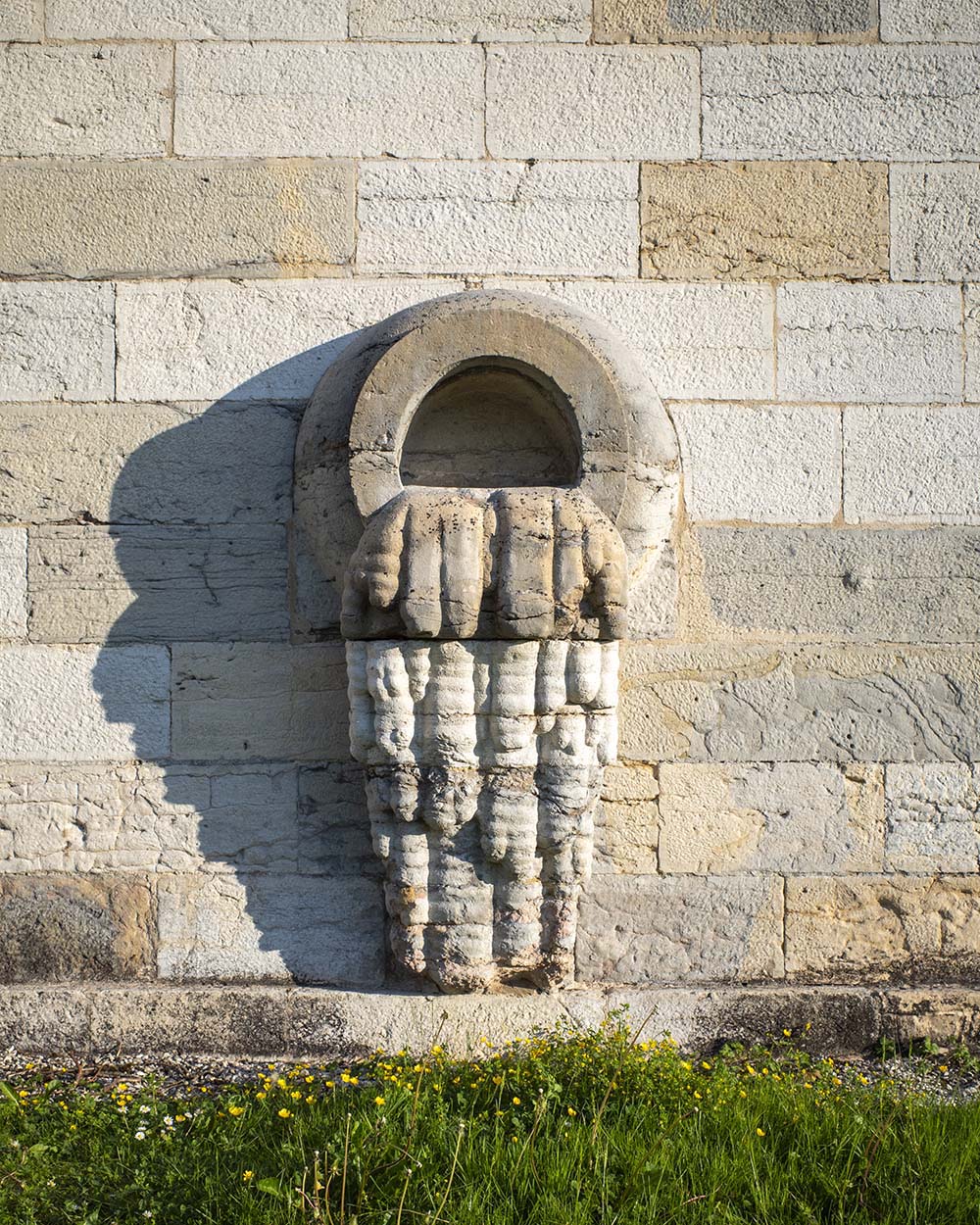
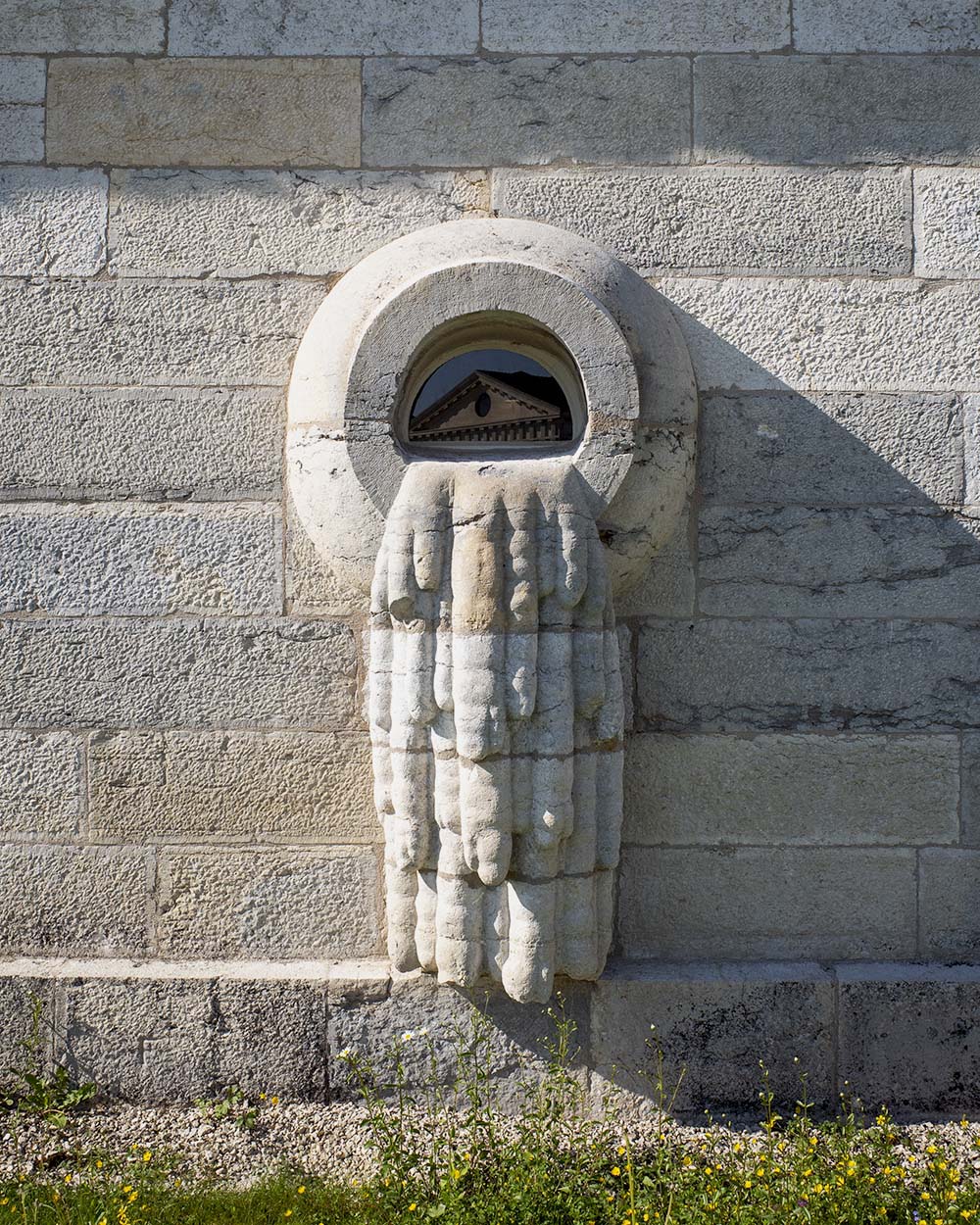
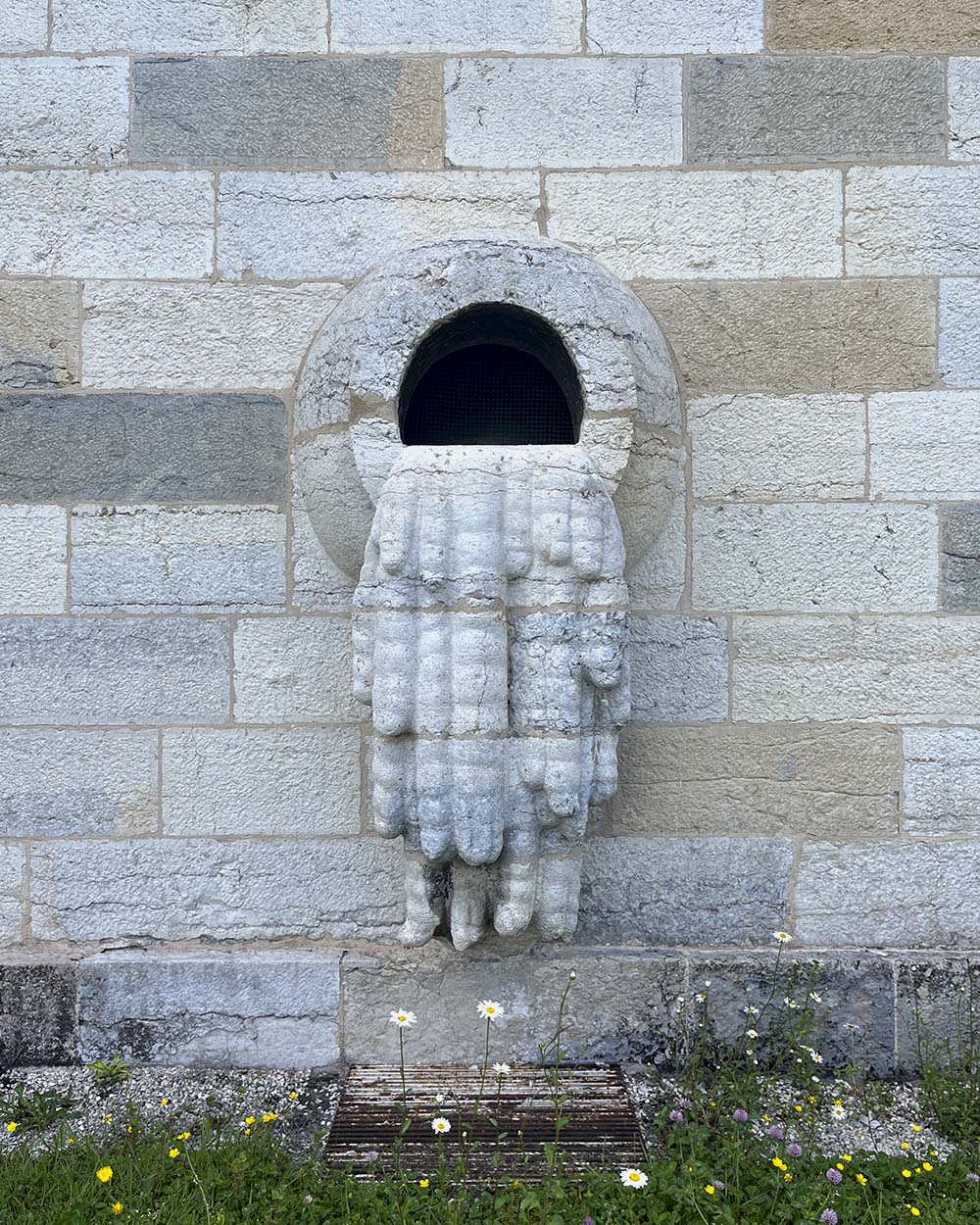
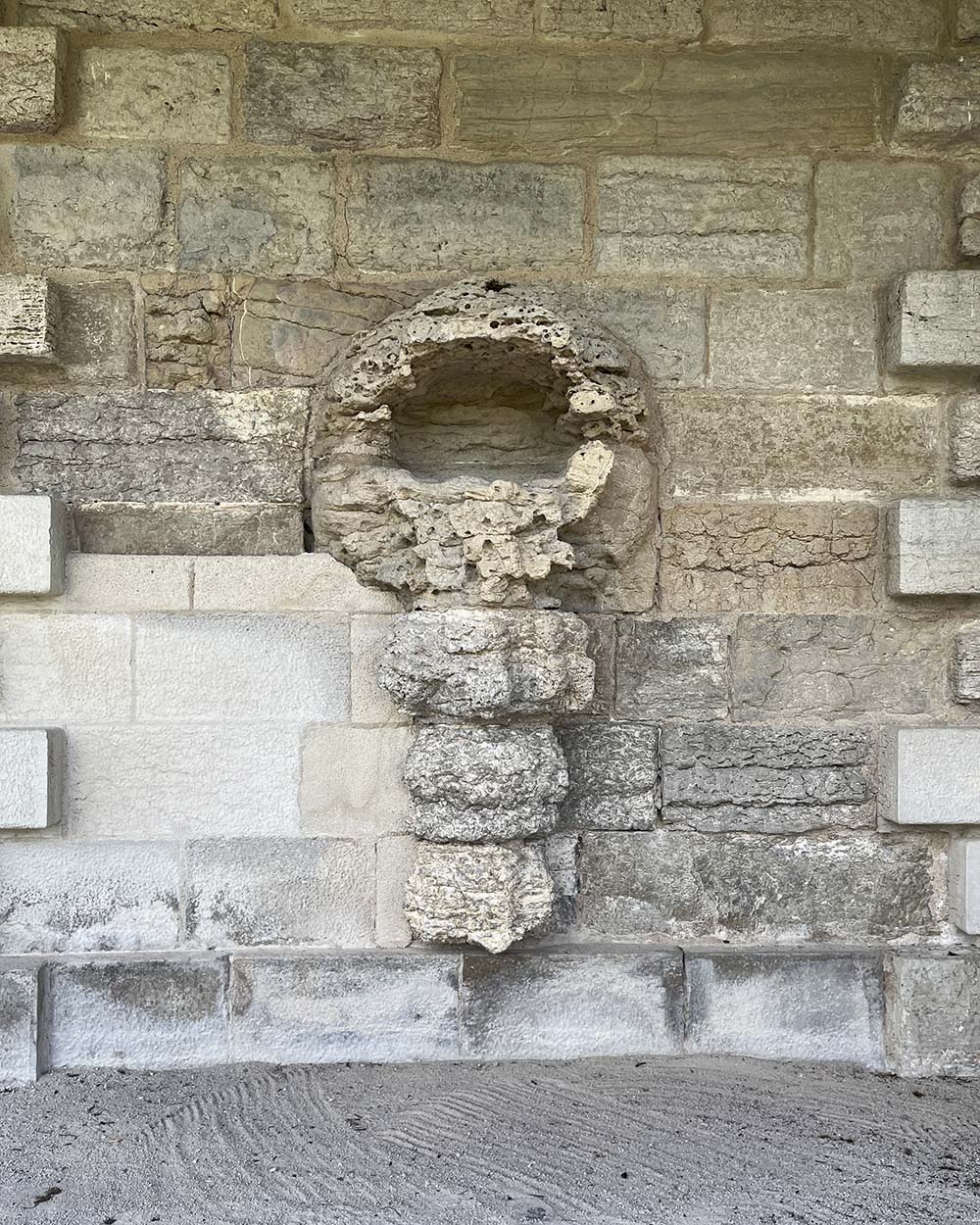
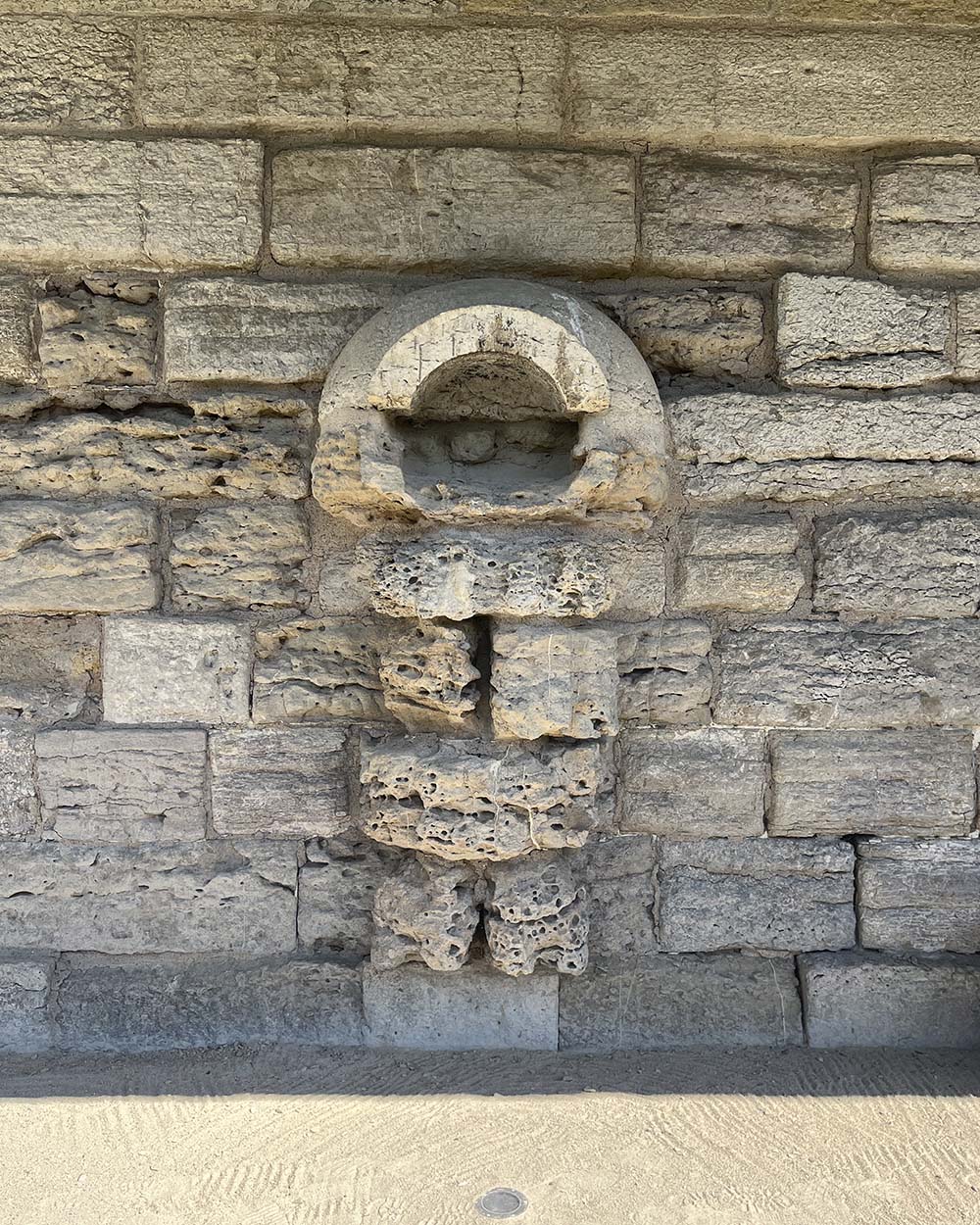
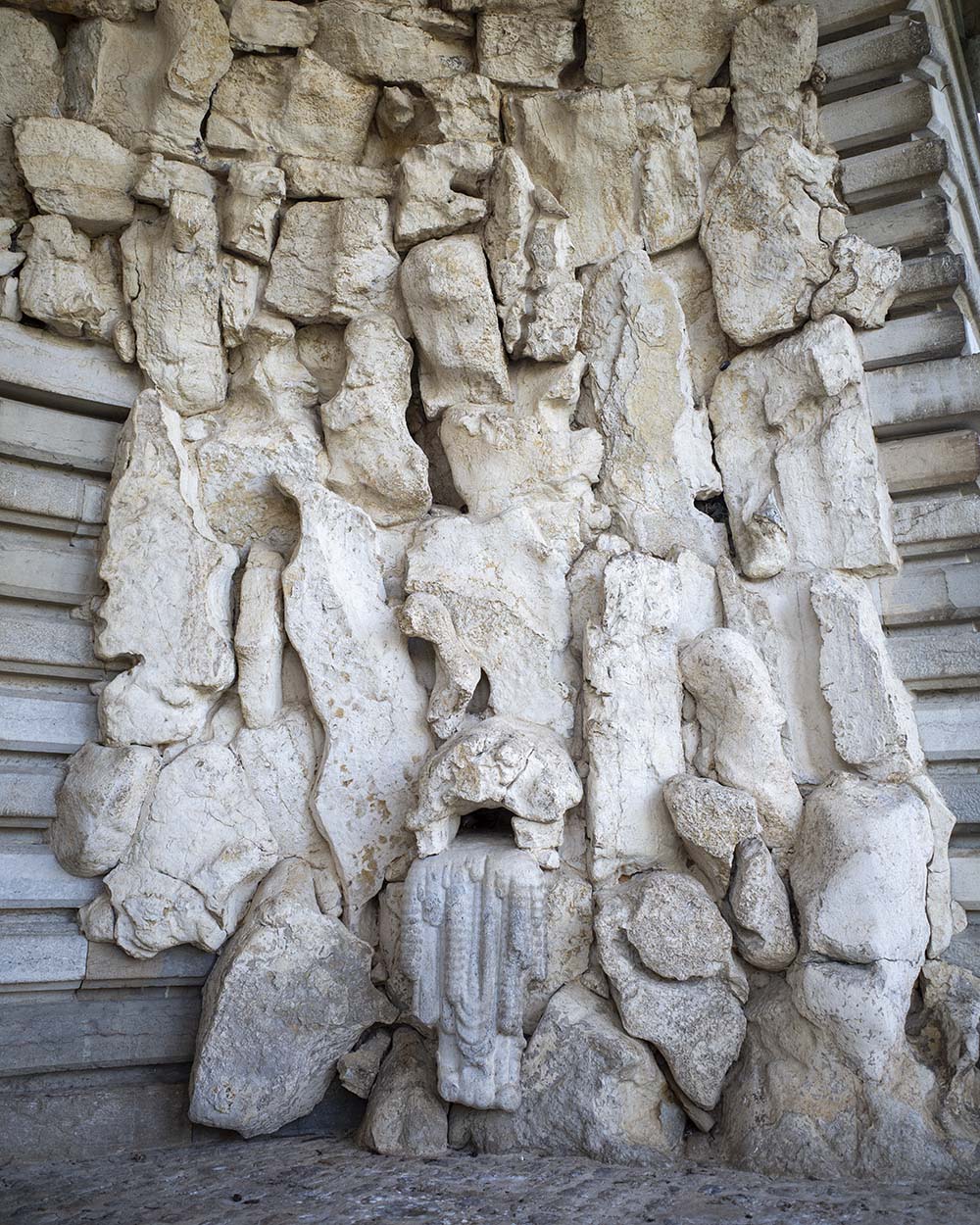
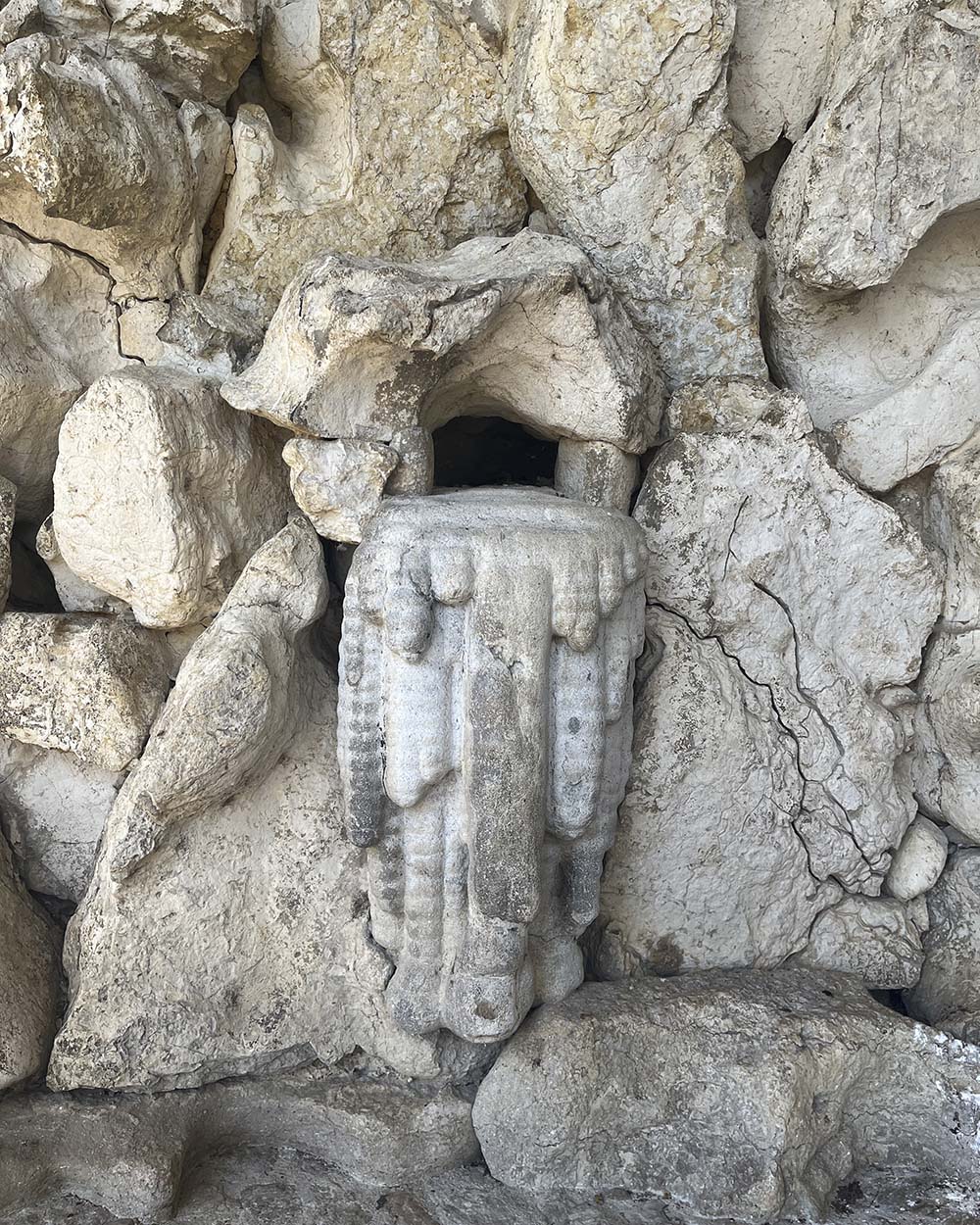

The urn with flowing liquid is a decoration on the surface of the building. At the same time, it is also a sculpture in the modernist sense. The urn itself is not decorated: only the colour, pattern and weight of the stone define the urn. When viewed from the front, the circular spout and round contour of the urn stand out: the urn is reduced to circles. The liquid flowing down is also an abstraction, not intended to be an accurate description of water.
The urn with flowing liquid certainly represents the function of the saltworks, but it is not a symbol of it. A saltworks is not an abstract concept or idea to be understood by symbolism, but a functional and practical facility in the first place. Rather, the function of this ornament is to pre-inscribe the passage of time into the architecture, thereby ensuring that the architecture archives universality. This approach is also found in other buildings designed by Claude Nicola Ledoux, realised or unrealised.
Take a close look at the spout of the urn again. Its semicircular inside appears to have the same semicircular shape as the plan of the Royal Saltworks of Arc-et-Senans. The content of the urn is not salt water, but a deep, spacious interior of the architecture. Thus, each ornament, urn with flowing liquid, becomes a portal that takes us to the total plan through its architecture.
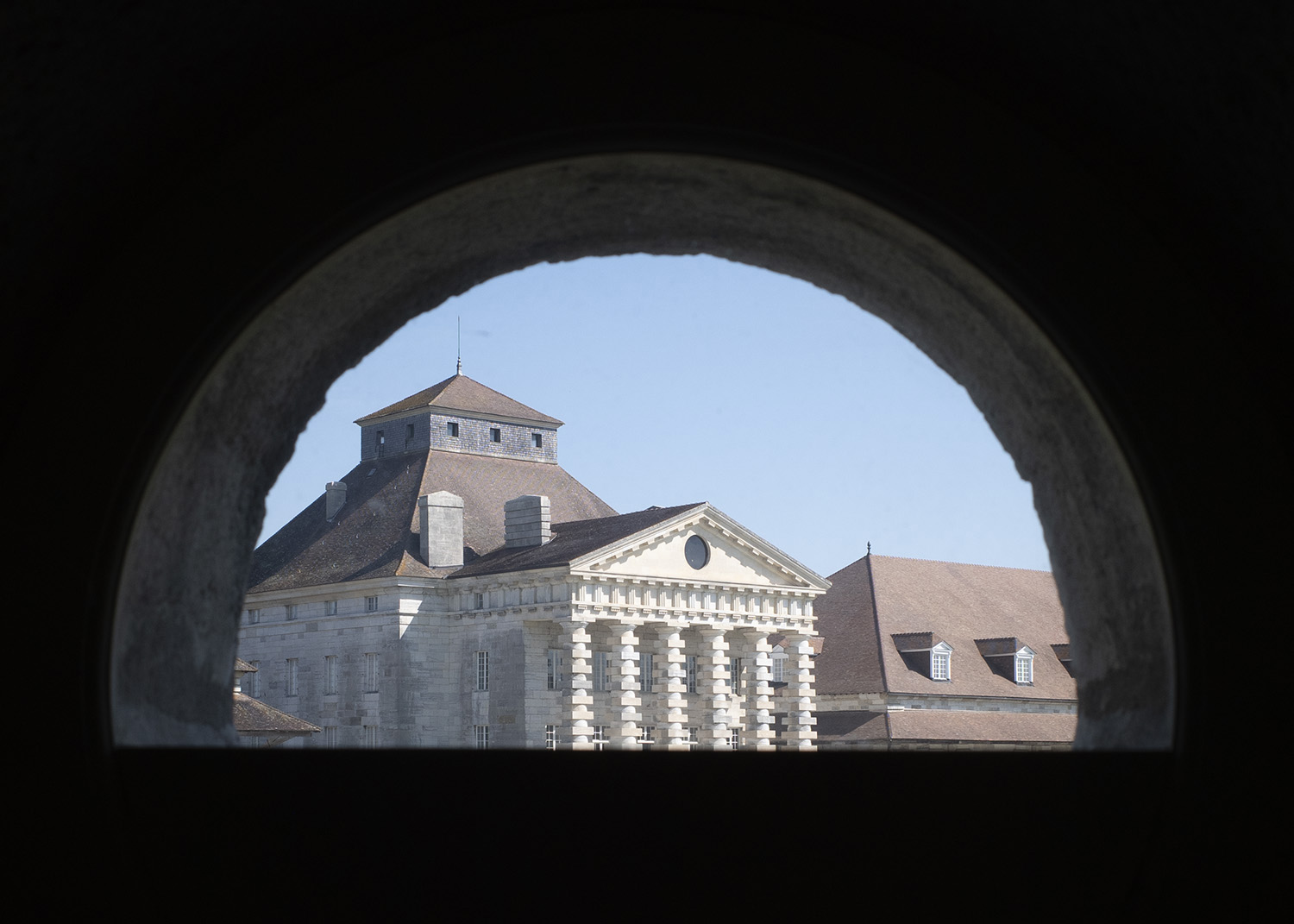
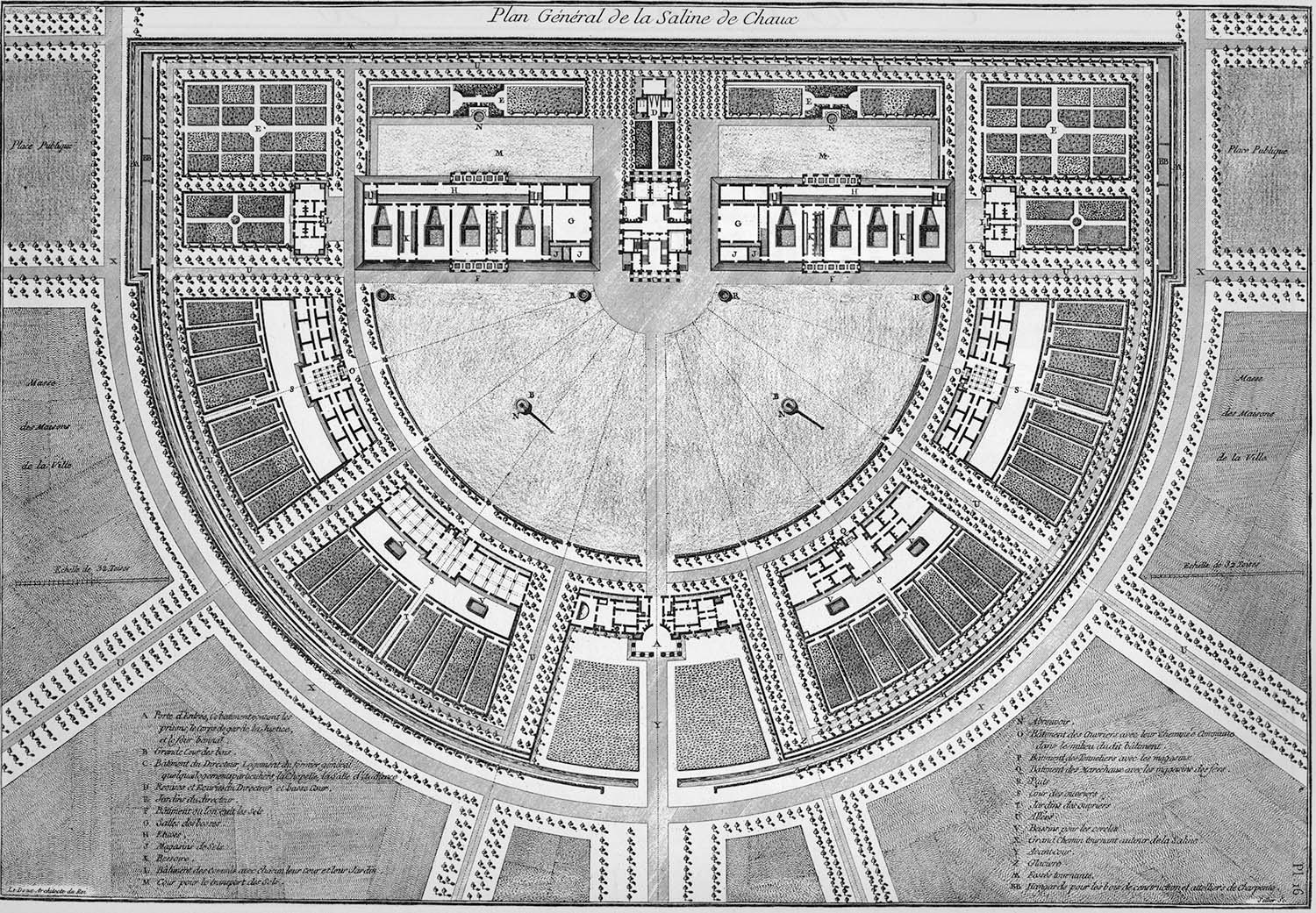
Text: June 2025